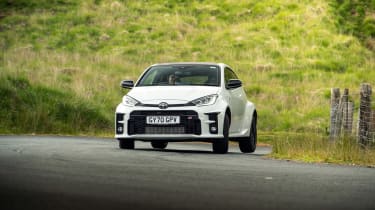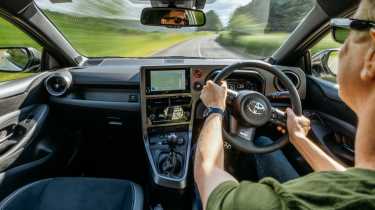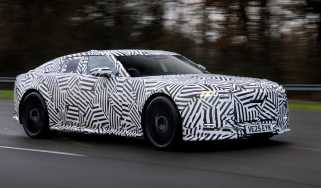Toyota GR Yaris – ride and handling
So unique, so fascinating, yet with room to grow
For a driving enthusiast, the sense of anticipation when handed the key to the GR Yaris is almost off the scale. To the uninitiated it may look like a humble little Toyota hatchback, but those who know, know.
When up and running, it’s immediately clear that the GR Yaris gets its pace not just from that energetic engine, but because in true rally homologation special, the original worries not a jot about the surface beneath its wheels. Ridges, compressions and broken asphalt are dismissed with barely a thought, the car charging onwards towards the next challenge without hesitation.
This new variant is a little more tense. It doesn’t spoil the car on British B-roads but you do feel it moving with a slightly stiffer gait. It’s a worthwhile trade-off for the more responsive handling. You’re very much in touch with what’s going on at all times, not only through the steering and pedals (brake feel is excellent, incidentally; it’s easy to feel the moment at which ABS begins to cut in, and you sense this car would be fun to move around on the brakes on track, or on a stage) but also through the chassis itself. And you’re more keyed in to it all, thanks to the lower-set seat. The GR Yaris still deals with undulations brilliantly, too, particularly over crests.
But whereas the old model sometimes felt as if you needed to be driving it hard before it came to life, the new one feels more alive, more eager at all road speeds, while also – slightly firmer ride apart – feeling more useable day to day, with less road noise and (mostly) better ergonomics.
More reviews
Group tests
In-depth reviews
Long term tests
Reviews
In Normal mode, the GR Yaris’s natural balance is toward understeer, but in Track mode it’s a positive, pointy thing. Get on the power early and you feel the torque balance helping this muscular little car squat and spring from a tight corner. You can also feel the Torsen limited-slip differentials at each end doing their thing.
On the original GR Yaris the Torsen diffs were part of the optional Circuit Pack, which also included forged wheels, Michelin Pilot Sport 4 S tyres and upgraded brakes, and added £3.5k to the price. Since most of the 20,000 cars sold in Europe were Circuit Pack versions, that’s the only spec available on the new car.
Unlike a front-wheel-drive hot hatch, the four-wheel-drive Toyota’s cornering repertoire is much more three-dimensional. A corner isn’t about simply getting the front to turn in and then managing traction on the way out, rather the Yaris will rotate and then power through, the primary objective for the driver being to see just how early they can get on the power.
The answer, often, is even earlier than you thought. Perhaps the Yaris could be more aggressive still at the front end, for as it stands it’s much closer to an old Subaru Impreza than a Mitsubishi Lancer Evo in character. The steering of the original lacked just that last degree of clarity on turn-in and the car favouring outright traction over hyper-agility.
Even so, the GR Yaris is the kind of hot hatch where you’ll struggle not to drive flat out everywhere, usually with a massive grin on your face. It’s also effortless everyday transport, and deeply cool if you know what you’re looking at.




